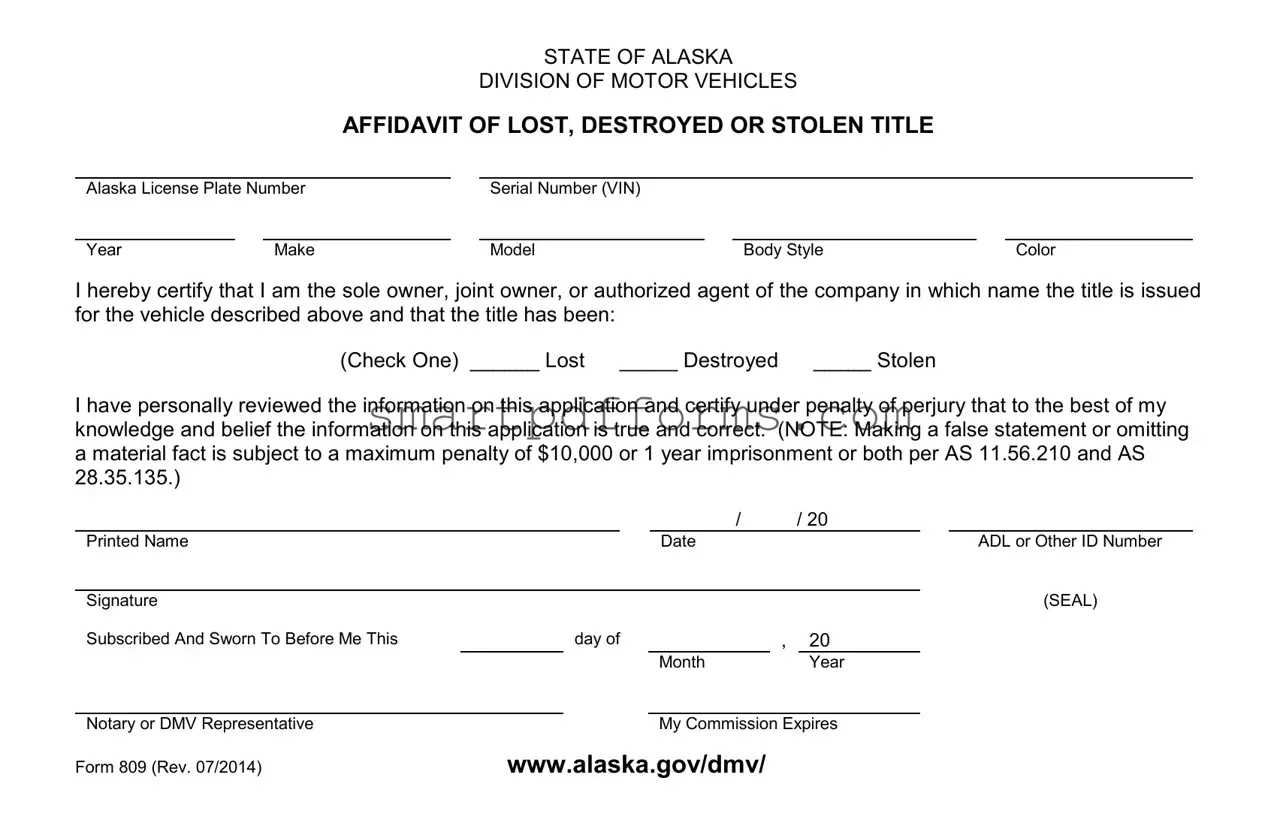Blank Alaska 809 PDF Template
The Alaska 809 form is a crucial document used when the title of a vehicle is lost, destroyed, or stolen. It serves as an affidavit, allowing vehicle owners or authorized agents to officially state the absence of their vehicle's title, under penalty of perjury. Individuals are required to provide detailed information about the vehicle, including license plate number, Vehicle Identification Number (VIN), and the physical characteristics of the vehicle.
Filling out the Alaska 809 form is a straightforward process, but it is vital to ensure all information is accurate and truthful to avoid penalties. For assistance and to fill out the form easily, click the button below.
Make This Document Now

